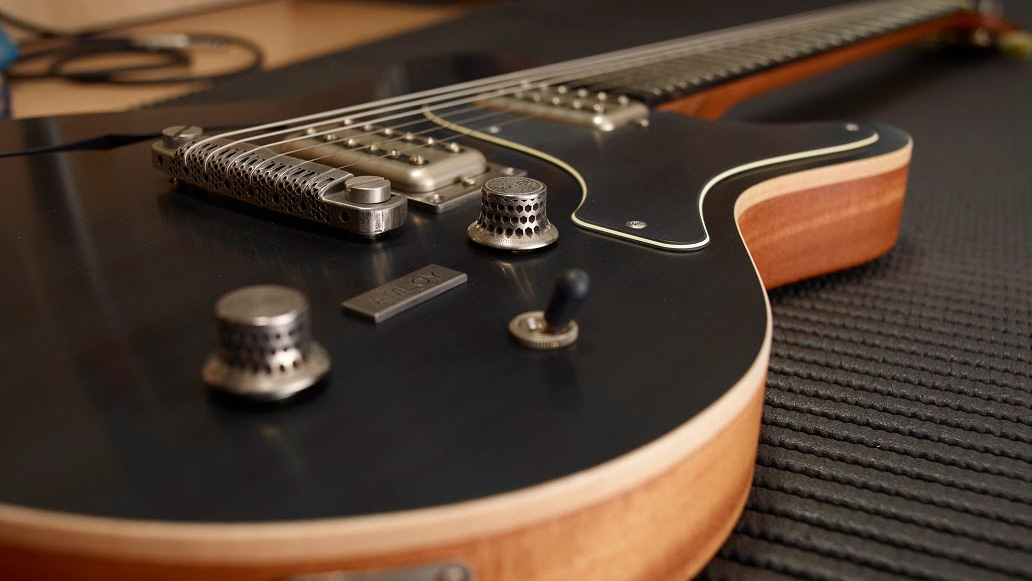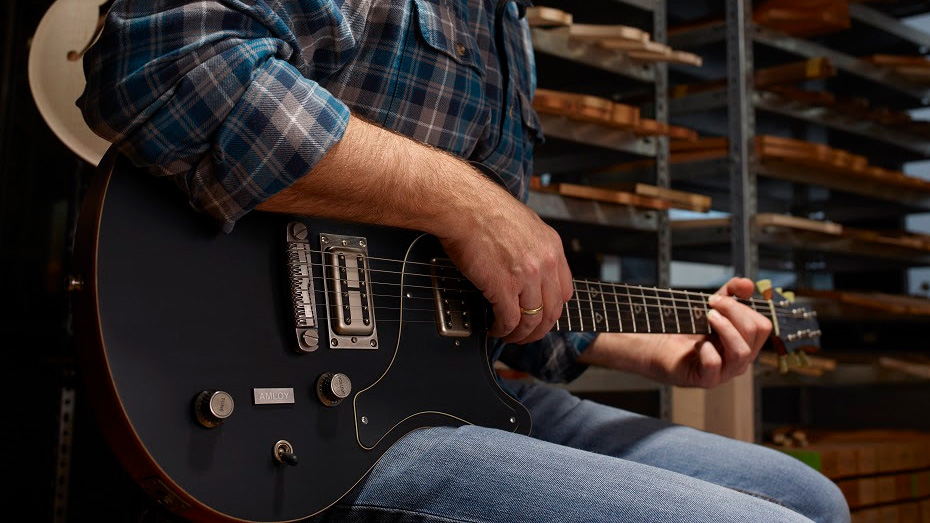Behold the world's first 3D-printed bridge made of metal
The “bionic structure” bridge increases vibration and is scratch and corrosion resistant, according to creator Heraeus AMLOY

We’re all familiar with electric guitar bridges made of steel, brass or aluminum. But how about a 3D-printed bridge constructed of amorphous metal?
Doesn’t ring a bell? Well then, check out the new offering from Heraeus AMLOY, a company specializing in the development and processing of amorphous metals.
The new bridge, which has been installed on a guitar for the first time by Nik Huber Guitars, is not solid, according to Heraeus, but rather has a “bionic structure.”
In addition to looking rather slick, Heraeus states that the amorphous metal bridge’s honeycomb structure influences the vibration period by dampening the vibrations less than closed, solid structures.

"One could also imitate the sound of other metals by changing the structures inside the bridge," says Heraeus AMLOY head Jürgen Wachter. “A bridge made of amorphous metal would then sound like a bridge made of brass, for example. The difference is that due to its elasticity it keeps the sound longer, does not wear out and still looks like new even after years.”
Since we’re just guitar players, and not engineers or scientists, Heraeus was also kind enough to provide some background on amorphous metals, which are formed through the shock freezing of molten metal.
According to the company, the atoms in amorphous metals have no opportunity to form a crystalline lattice and solidify in a disordered manner. Thus, the material is particularly elastic, but at the same time very strong.
All the latest guitar news, interviews, lessons, reviews, deals and more, direct to your inbox!
"Since amorphous metals are significantly more elastic than crystalline materials, they transmit vibrations very well," said Wachter. "Therefore, the material is ideally suited for stringed instruments such as guitars."

As an extra bonus, amorphous metals are also scratch and corrosion resistant, not to mention biocompatible - which means, Wachter says, “unlike nickel-plated aluminum bridges, [they’re] also suitable for allergy sufferers.”
For more information, head to Heraeus.
Rich is the co-author of the best-selling Nöthin' But a Good Time: The Uncensored History of the '80s Hard Rock Explosion. He is also a recording and performing musician, and a former editor of Guitar World magazine and executive editor of Guitar Aficionado magazine. He has authored several additional books, among them Kurt Cobain: Montage of Heck, the companion to the documentary of the same name.

